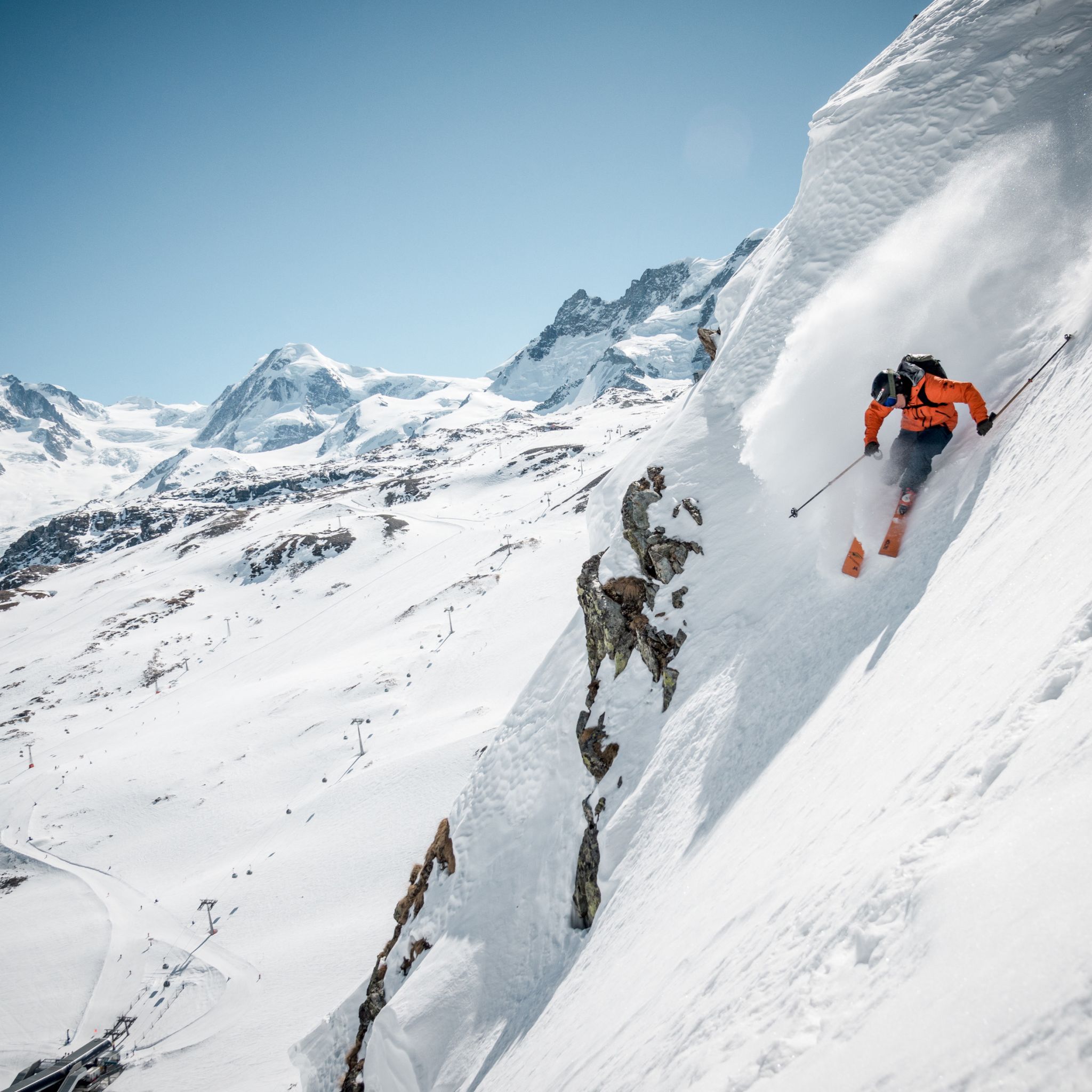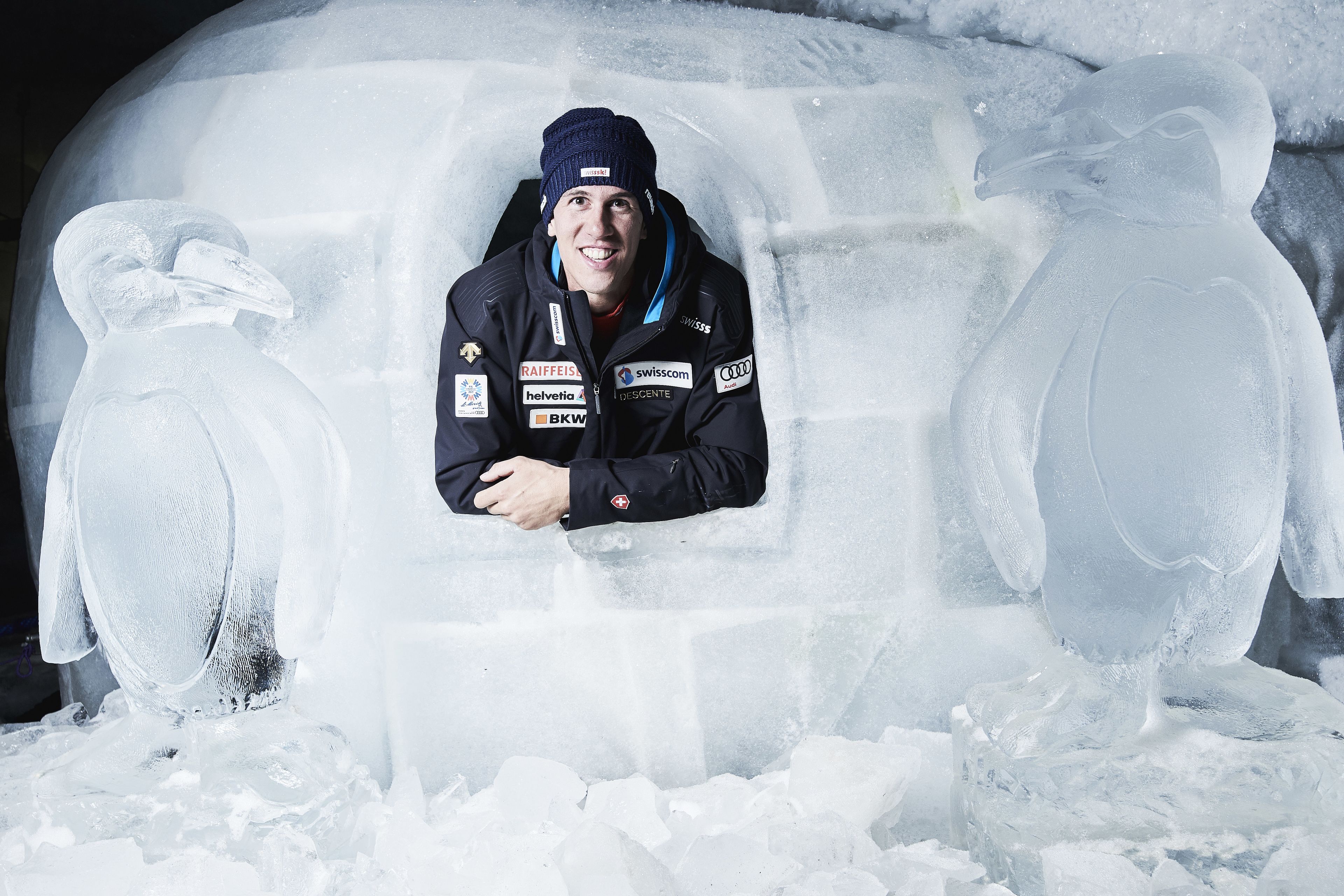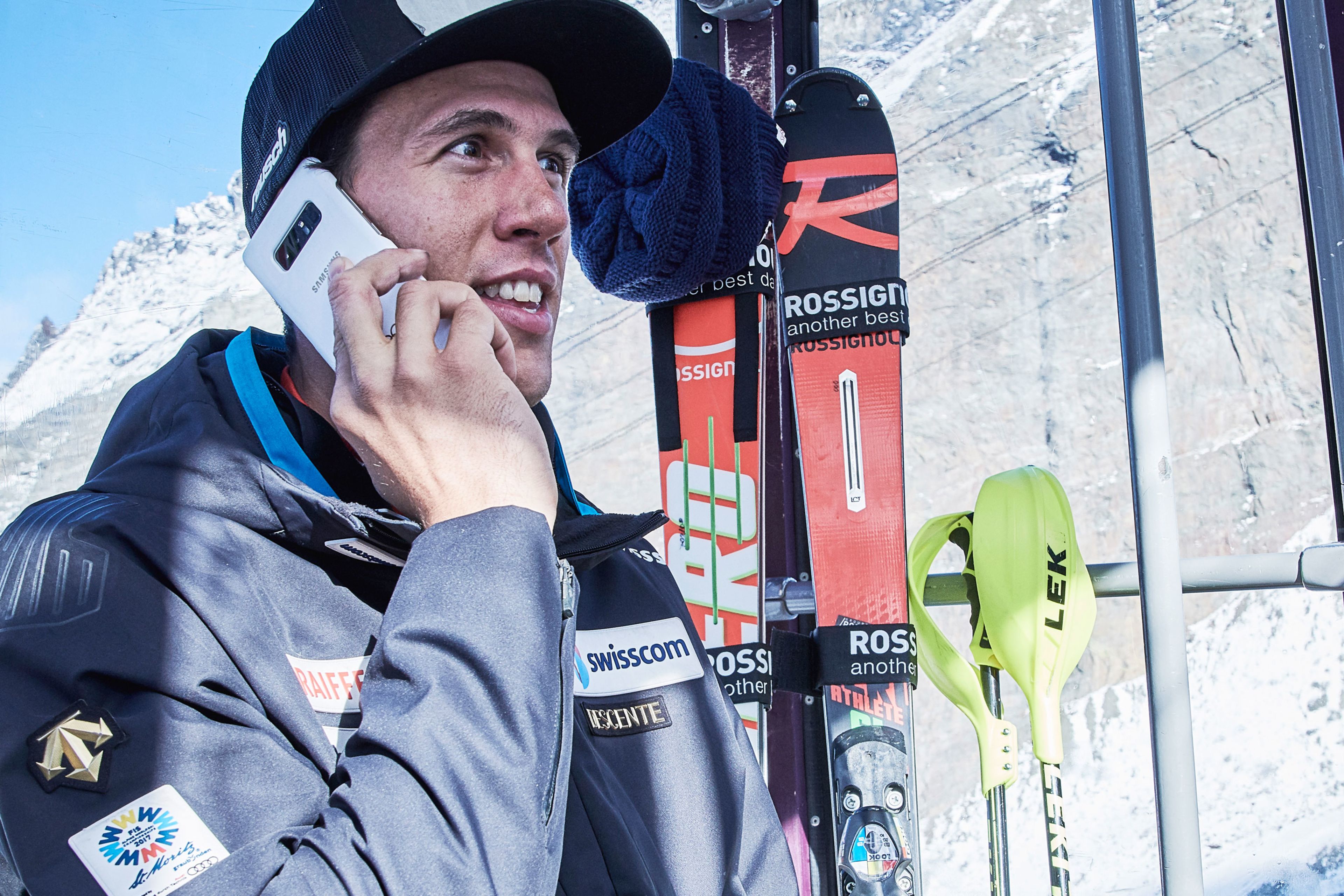Heights of achievement
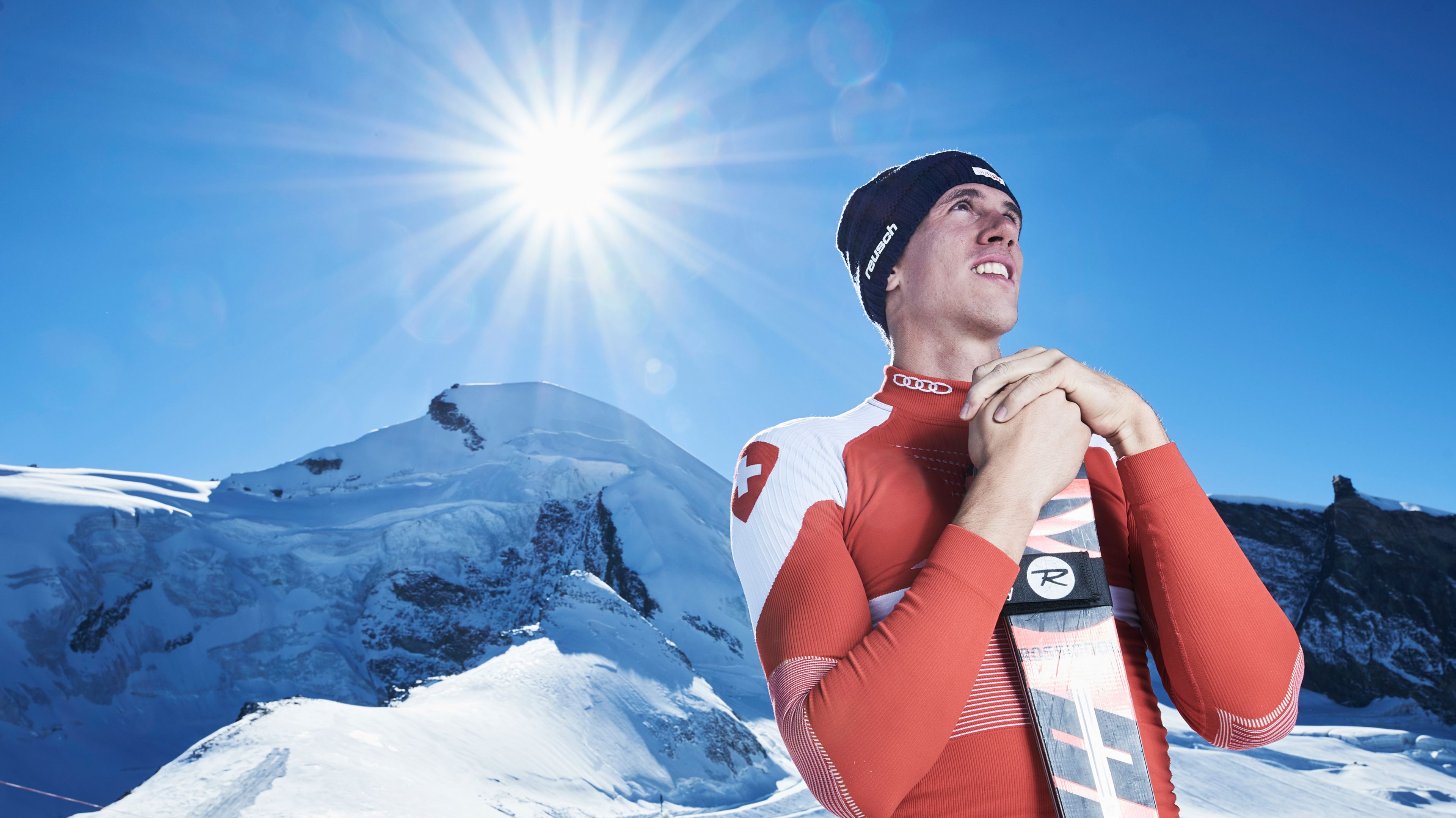
Olympic medallist Ramon Zenhäusern tackles the ski racing season with confidence – thanks to training on his home glacier high above Saas-Fee.
Ramon Zenhäusern looked remarkably calm as he embarked on this season’s World Cup circuit at Levi, Finland, on 18 November 2018. Especially considering the high expectations that surround him – ever since 22 February 2018, when the strikingly tall skier from Visp (2 metres, head to toe) won Olympic silver in slalom at PyeongChang. His sports psychologist, Frank Trötschkes, even predicted the result: “The race is on the 22.2., you’re 2 metres tall and you’ll win 2nd place,” he told his talented young charge. Which is exactly what happened. And just two days later, Ramon won gold in the team event with fellow members of the Swiss national team.
Now 26, the racer has long worked on his success: he has been training professionally since the age of 12. “So far in my career I’ve always moved forwards,” he says. “Sometimes in small steps, but always forwards.” The slalom specialist began the 2018/2019 race season ranked sixth worldwide. “That means I need to reach at least fifth,” he laughs. Naturally he is aware of the increasing pressure from outside and the growing expectations, but he does not want to add to the pressure himself. His main goal remains, as before, “staying healthy and having fun skiing. The results then look after themselves.” Since last spring, on the recommendation of his sports psychologist, he has discovered self-hypnosis as a form of mental training. Ramon remains relaxed and down-to-earth, as ever: “What I have achieved, no one can take away from me,” he says. After all, providing he stays fit, he has a good ten years ahead to perfect his performance.
Ramon discovered and fell in love with skiing at the Valais resort of Bürchen, where his parents have a chalet. He was barely two years old when he first rode the children’s ski lift – which now bears his name. Later, his father, Peter Zenhäusern, would reserve a section of piste up at Moosalp to train his son. They were only allowed to set up the gates on the edge of the piste, instead of using up the whole width of the run, making for a tight slalom course – which is probably why Ramon ended up specialising in the discipline, despite his great height. But by character, too, Ramon was never drawn to the speed disciplines. The risk of accident is much greater, and, for him, was not worth it. Many people told the gangling lad he wasn’t suited to slalom skiing, but his dad always believed in him – as did his mentor and coach, Didier Plaschy, former ski racer and director of Ski Valais.
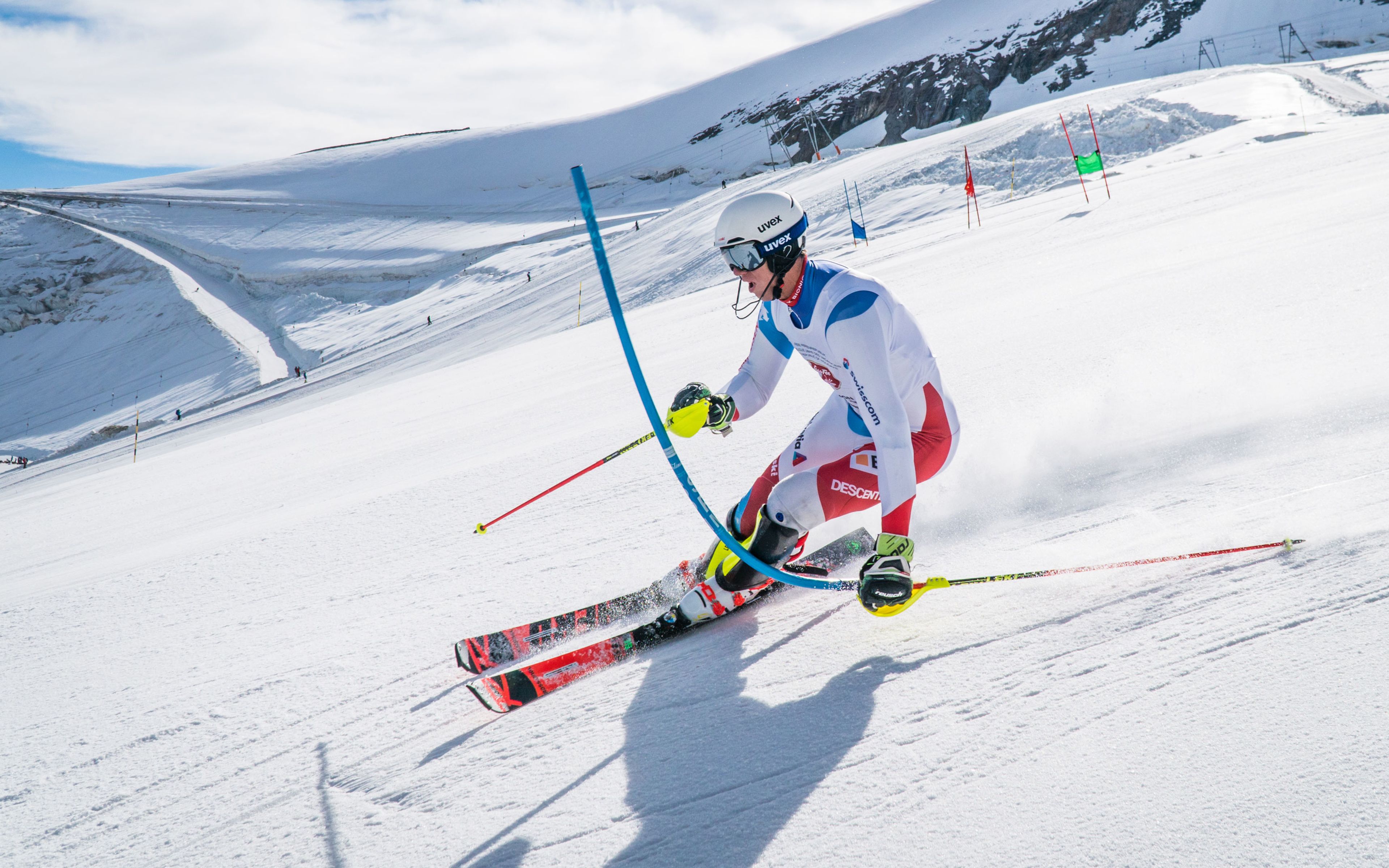
For many years, during summer, Ramon has been training with Didier Plaschy on the Fee Glacier at the foot of the Allalinhorn, 3,500 metres above sea level. From mid-July, there are always three lifts in operation up at Mittelallalin, serving 20 kilometres of piste. A fourth lift is currently under construction and will open in summer 2019. On busy days, Saas-Fee’s summer ski area hosts about 1,200 skiers a day, almost entirely members of professional teams: more than 300 teams train here, of which about a quarter are national teams from some 20 different countries in Europe, North America and even Japan. The Spanish ski federation even sets up its summer base in Saas-Fee for five months, and comes with all its teams and age groups up to Mittelallalin. Last summer, Ramon became the official summer ski ambassador for Saas-Fee. But his attachment to the region goes back much further. He has friends and acquaintances here who have accompanied him on his journey to the summit. Following his return from PyeongChang and the exuberant reception in Visp, he spent the evening in Saas- Fee. “After dinner with friends, Ramon was already in his room at 8.30 pm,” says Stefan Schnyder, owner and manager of the Hotel Jägerhof. “He had been looking forward so much to having a moment to himself, to take in what he had achieved.” On Stefan Schnyder’s invitation, Ramon would come to the hotel during and after the winter season to switch off and have a complete break.
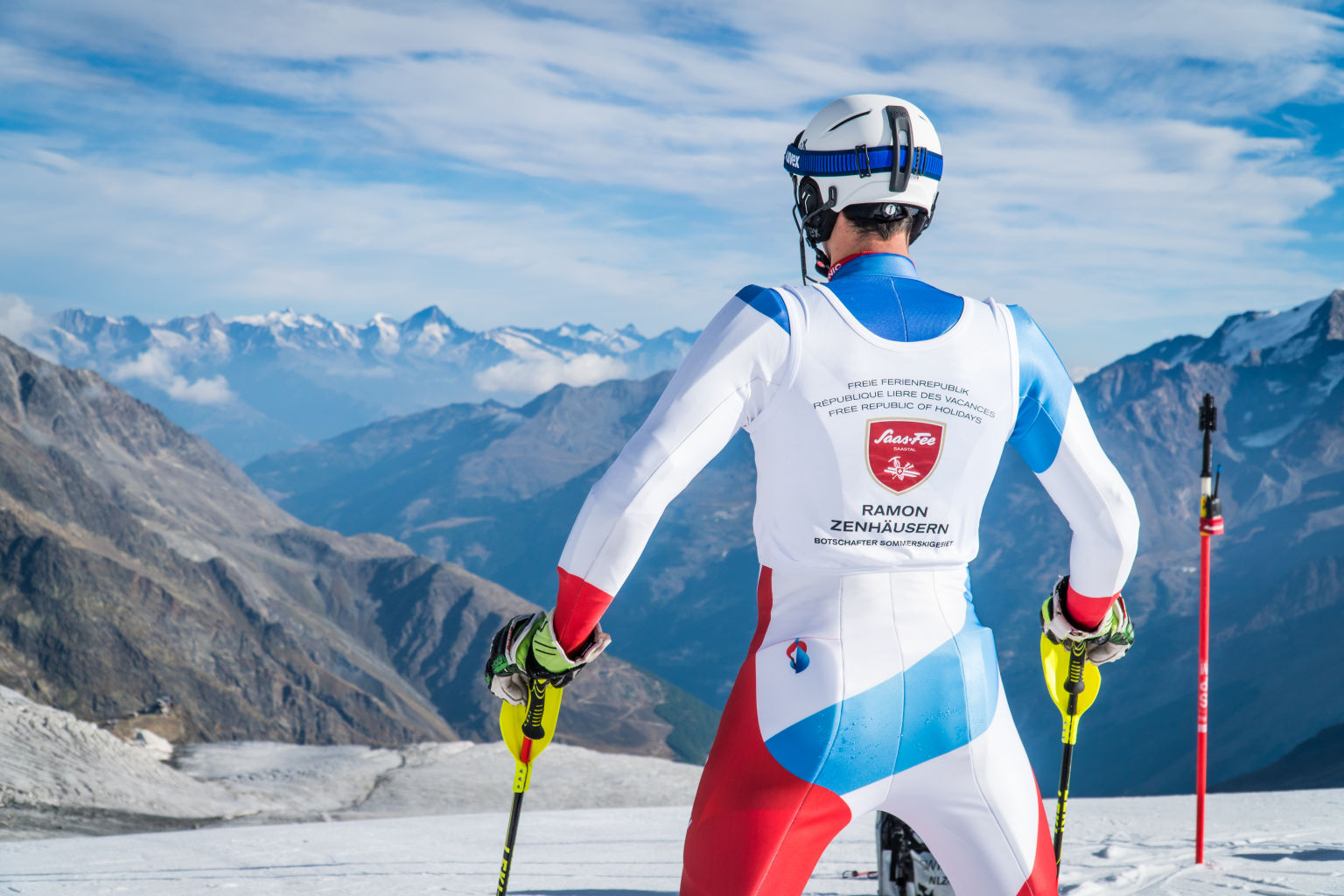
The Olympic medallist took his holidays later than planned and worked towards his bachelor degree in economics. The home-study programme gives him balance, stimulating his mind so that he does not think only of skiing all day. Last summer he started his ski training later than his other team members, so he decided to train in Saas-Fee. After all, summer training on the Fee Glacier had already proved a success: it was here, too, that he had prepared for his previous, highly successful, season. “In half an hour, I’m on the best glacier in Europe, and I can still go swimming or cycling in the afternoons,” he says – another reason for him to train on his home glacier. “Seeing the sunrise lighting up the Mischabel massif gives me energy,” he adds. He also gains strength from being close to his family and his home region. “Even if I travel a lot, I know I will come back to Valais my whole life.”
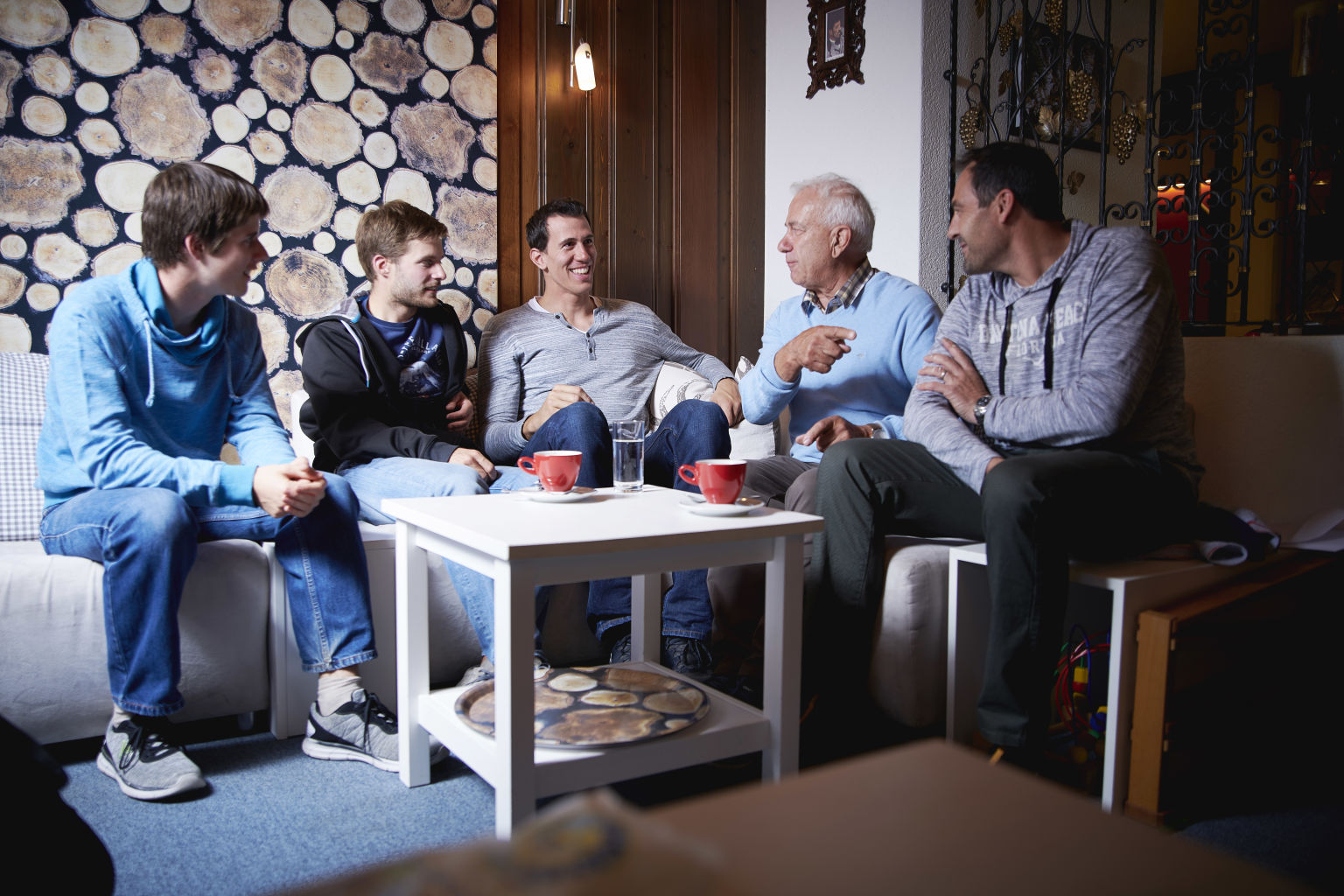
Text: Manuela Lavanchy Photographs: Sedrik Nemeth
Published : December 2018
A free spirit in paradise
Next story
